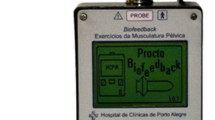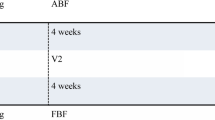Abstract
A study was carried out in 25 incontinent patients to evaluate some of the factors thought to be responsible for the success of retraining for fecal incontinence. Subjects were initially allocated to one of two groups; one group was trained to perceive small rectal volumes (active retraining), the other group carried out the same maneuvers but were not given any information or instruction. Active sensory retraining reduced the sensory threshold from 32±8 to 7±2 ml (P<0.001), corrected any sensory delay that was present (P<0.004), and reduced the frequency of incontinence from 5±1 to 1±1 episodes per week (P<0.01). Sham retraining caused a modest reduction in the sensory threshold (from 29±9 to 20±8; P<0.05) but did not significantly reduce the frequency of incontinence. Subsequent strength and coordination training did not significantly improve continence, although at the end of the study, 50% of patients had no incontinent episodes at all and 76% of patients had reduced the frequency of incontinence episodes by more than 75%. This improvement in continence was not associated with any change in sphincter pressures or in the continence to rectally infused saline but was associated with significant improvements in rectal sensation. The functional improvement was sustained over a period of two years in 16 of the 22 patients available for follow-up. In conclusion, the results support the use of retraining in the management of fecal incontinence and suggest that retraining may work by enhancing rectal sensitivity and instilling confidence.
Similar content being viewed by others
References
Cerulli MA, Nikoomanesh P, Schuster MM: Progress in biofeedback conditioning for fecal incontinence. Gastroenterology 76:742–746, 1979
Parks AG: Anorectal Incontinence. Proc R Soc Med 68:681–690, 1975
Keighley MRB, Makuria T, Alexander-Williams J, Arabi Y: Clinical and manometric evaluation of rectal prolapse and incontinence. Br J Surg 67:54–56, 1980
Latimer PR, Campbell D, Kasperski J: A components analysis of biofeedback in the treatment of rectal incontinence. Biofeedback Self Regul 9:311–324, 1984
Allen ML, Orr WC, Robinson MG: Anorectal functioning in faecal incontinence. Dig Dis Sci 33:36–40, 1988
MacLeod JH: Biofeedback in management of partial anal incontinence. Dis Colon Rectum 26:244–246, 1983
Buser WD, Miner PB: Delayed rectal sensation with faecal incontinence: Successful treatment using anorectal manometry. Gastroenterology 91:1186–1191, 1986
Read NW, Harford WV, Schmulen AC, Read MG, Santa Ana C, Fordtran JS: A clinical study of patients with fecal incontinence and diarrhoea. Gastroenterology 76:747–756, 1979
Read NW, Haynes WG, Bartolo DCC, Hall J, Read MG, Donnelly TC, Johnson AG: Use of anorectal manometry during rectal infusion of saline to investigate sphincter function in incontinent patients. Gastroenterology 85:105–113, 1983
Sun WM, Read NW, Miner PB: The relationship between rectal sensation and anal function in normal subjects and patients with faecal incontinence. Gut (in press)
Author information
Authors and Affiliations
Rights and permissions
About this article
Cite this article
Miner, P.B., Donnelly, T.C. & Read, N.W. Investigation of mode of action of biofeedback in treatment of fecal incontinence. Digest Dis Sci 35, 1291–1298 (1990). https://doi.org/10.1007/BF01536422
Received:
Revised:
Accepted:
Issue Date:
DOI: https://doi.org/10.1007/BF01536422




